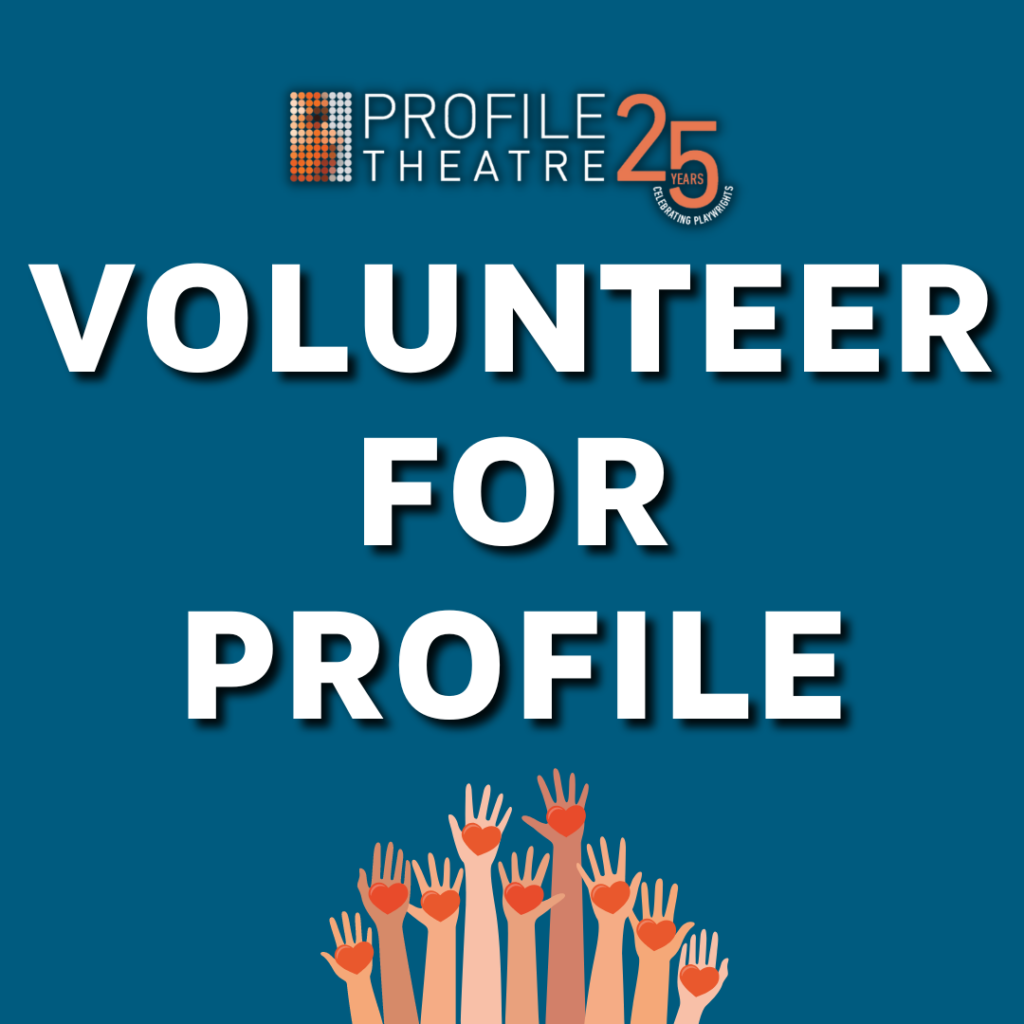Supplemental to the My Children! My Africa! Guide
Created for Profile Theatre by Teaching Artist Bobby Bermea
Objective: To explore themes and ideas found in My Children! My Africa! using interactive theatre exercises as the medium of exploration.
Cover the Space
The facilitator sets up a big rectangle in the room, using four chairs or trash cans as markers. Have everyone start walking around within the designated space. The rules are no talking, no physical contact, and keep moving. Tell everyone to be aware of their own body, the bodies around them, and the space on the floor. Then, ask them to begin to make certain that the space on the floor is covered. They need to keep moving at all times, get to corners and sidelines, and to always move to empty spaces to “cover the space.” At random intervals, the facilitator says “Freeze!” When frozen the students should be evenly distributed around the space, filling it. The facilitator then points out how they’re doing, and sends them right back to covering the space. It’s a game of freezing, getting new instructions, and finding their rhythm again.
(5-10 mins. Source: Augusto Boal)
Identify
Students are covering the space. They are told to group themselves, instantly, according to some outside feature that is similar but innocuous. For instance, they might be told to group themselves according to their pants. They might choose color, they might choose fabric, they might choose length, style but they can not discuss with each other the criteria they are using. This is a silent game. After everyone is in a group the facilitator asks the students individually what their criteria was for choosing their group. For instance, one student in the group might say “I chose this group because all of their pants were blue.” And another student in the same group might say, “I chose this group because all of their pants were denim.” Then they resume covering the space and the teacher throws out another feature.
(5-10 mins. Source: Michael Rohd)
Defender
Everyone starts walking around the space without talking and with no contact. After a few minutes the facilitator tells the students to secretly pick an individual in the room that they will consider their own personal defender. They can’t speak to them or otherwise indicate that they have chosen this person and they must continue to move around while doing so. Then, the facilitator asks everyone to secretly pick an enemy. Same criteria apply. Then the facilitator tells them that their goal is to keep their defender between themselves and their enemy at all times. They play this for a couple of minutes. Next, the facilitator gives them circumstances with varying levels of importance. Maybe their enemy annoys them, they owe their enemy money, their enemy is an ex-friend or ex-romantic partner, their enemy is trying to kill them, and so on. The different circumstances should alter the physicality of the students. Push them to get their whole body involved, and make it important to them. This is a silent game. When game is over, discuss how different circumstances were experienced in body and mind.
(5-10 mins. Source: Michael Rohd)
Cross the Line
Class is divided into two groups. They stand in two lines on either side of the classroom, facing each other. Two students are questioners. They stand at either end of the invisible “line” that is in the center of the space (like tennis referees). The questioners take turns asking true or false questions of the two groups. For instance, “Cross the line if you brushed your teeth this morning.” The students in each group cross to the other side if the statement is true for them. They do not cross the line if the statement is not true for them or if they simply don’t want to answer. This should be made clear. There is no talking. No one explains or defends why they did or didn’t cross. No one speaks except the questioners. The questions can move from the innocuous (see above) to the more profound, e.g. “Cross the line if you have ever been discriminated against unfairly.” After three to five questions, each questioner asks if anyone wants to ask the questions. They exchange places with those persons. Afterwards, the facilitator invites the students to discuss how they were affected by the exercise as a whole, what they noticed about the group reactions that were different/the same as their own reaction, whether or not the group reactions affected their desire to share, what they were excited to respond to, what they were hesitant to respond to, what surprised them about their response or the group’s response, etc. The discussion is not about the specifics of any one individual’s response to a given question.
(10 mins. Source: Craig Williams)
Shift
Two students read a two minute scene from My Children! My Africa! The class talks about what the scene means. Then the same two students read the same scene again, only this time with a different emotional spin (they’re angry, they’re sad, they’re flirting, they’re trying to find out information, etc.) no matter what the actual text is. The class discusses how the emotional spin affected the scene. Then trade out one or both readers, changing the sex/race/attitude of the character. The new pair reads the scene again. And then the class discusses how the new dynamic changed the way the scene was played or the impact it had on the audience.
(10-20 mins. Source: Bobby Bermea)
Identify II
Set up is the same as Identify above. Once divided, one group is designated as superior. One group is designated as inferior. A set of rules are then placed on inferiors by superiors. A list of what those rules can be is decided beforehand by the entire class (e.g., Inferiors have to stand up while superiors are sitting down. Inferiors can never have their heads above or at equal height to the heads of the superiors. Inferiors have to ask permission from the superiors to use the bathroom. The teacher asks the superior a question, if they don’t know the answer, they ask their inferiors to give the answer. The teacher then praises the superior.) The class brainstorms ten options and the superiors select a maximum of three. Go this way for a while and then switch groups. The new superiors select a different set of rules from the list. Discuss.
Letter to the Past
However many students are in the class, cut up that number of strips of paper. On half of them write “Thami” and on the other half write “Isabel” and place them all into a hat. Each student draws one strip of paper. Whoever they get, that’s who they’re portraying, regardless of race, gender, etc. The students then take ten minutes to write a letter to Mr. M from ten years after the events of the play. The letter is what they – as their character – would say to Mr. M now about what happened then, and what has happened in South Africa since, if they could speak to him. The students then pass their letters to the student on their left (or right, it doesn’t matter so long as the student doesn’t “choose” who the reader is). A reader stands up, and another student stands up to portray the “ghost” of Mr. M. The reader then speaks the letter to Mr. M and Mr. M listens. Reader and Mr. M rotate around the class. The facilitator can modify number of letters shared for time.
The Trial of Mr. M
Everybody in the classroom is designated as black South African. The premise is that this trial takes place at the school where Mr. M is waiting for the mob to come get him. Rather than just drag him out and kill him right away, he is given a chance to defend himself and is even granted assistance in his defense.
Set-Up:
One student portrays the judge, one student portrays the prosecuting attorney, one student portrays the defense attorney, one student portrays Mr. M and the rest of the students are divided into support teams for each attorney and the jury. The outcome is unknown. For the purposes of this exercise whether or not Mr. M will live is still a question. If the class feels that the defense has made the stronger case, the ending of the play is changed, that’s it.
The judge is in charge of keeping time, upholding or denying objections and keeping attorneys from badgering the witnesses.
Trial Prep:
The students take ten to twenty minutes to develop their cases for and against Mr. M. No facts about characters that are not introduced in the play can be used (e.g. “Mr. M once fought by the side of Nelson Mandela!”). If such a violation occurs, it is up to the opposing legal team to object. The judge can uphold or deny the objection. However, things can be inferred as long as the inference is made from the text (e.g. “Mr. M has been an upstanding citizen of the community.”) Also, facts learned about apartheid or South Africa, either in the groups’ prep time or previously in class studies, (e.g. “far too many South African blacks have already been hurt or killed by other South African blacks for the cause”) are allowed. After the time allotted to prepare the cases is over, the trial convenes.
The Trial
The prosecution can present up to three witnesses and up to three pieces of evidence gleaned from the script. They have two minutes to question each witness. They do not have to take the whole two minutes. Then the defense is allowed to cross examine, again for two minutes.
Then the defense is allowed three of its own witnesses and three pieces of evidence. Same time limits. One exception is Mr. M can choose to speak for himself if he has something to offer that is different from the evidence proffered by his defense team (e.g. here is where emotional or sentimental appeals might be made: “I’ve watched all of you grow up, I taught your parents before I taught you, etc.”).
Each side offers their summation of their case. A time limit of one to two minutes should be placed on all summations, appeals, etc. There is no pleading the fifth during examinations. Every question has to be answered.
Once each side has delivered their closing arguments, the jury has five minutes to deliberate before delivering their verdict. The judge has the ability to set aside the jury’s verdict if he finds that there was not enough evidence to support it.
Discuss.












































